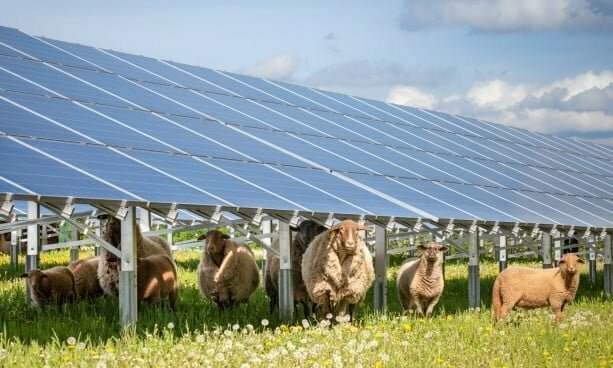 (Credit: BlueWave)
(Credit: BlueWave)BlueWave has received $91 million in financing in order to achieve long-term ownership and management of its growing solar development portfolio, including five agrivoltaic projects in Massachusetts. The B Corp will use the land for both solar development and agricultural use.
BlueWave, which developed the first community solar farms in the state, has partnered with the Solar Massachusetts Renewable Target (SMART) Program as a part of this expansion. The financed projects will deliver solar energy and cost savings to around 770 low-income households in the area. The company also aims to model effective implementation of agrivoltaics, driving more widespread adoption of the sustainable practice in the solar sector.
"The BlueWave team is uniquely poised to succeed, thanks to our team of industry leaders with vast experience in farming and regenerative agriculture,” said Mike Marsch, BlueWave's chief development officer. “We've paired our people with leading researchers from American Farmland Trust and the University of Massachusetts on select sites, with funding from the U.S. Department of Energy, to advance understanding and deployment of agrivoltaics. As solar continues to scale across the country, these projects aim to set a new industry standard for responsible land use and ensure farmland is kept viable for future generations."
The financing includes a $64 million debt raise with KeyBank and a tax equity raise of $27 million with U.S. Bancorp Impact Finance. The company attributes the acquired financing to collaborative support from its parent company, Axium Infrastructure, and its team of trusted partners.
Agrivoltaic projects are unique in their use of land for both agricultural and renewable energy development. Four of BlueWave's five funded solar projects will allow for uninterrupted farming beneath the installed solar panels, and the fifth site will create a new grazing pasture. All of the sites will feature crops, pollinator habitats, and livestock grazing. At the same time, they will deliver enough clean energy to power 2,570 households in the state, offsetting emissions equivalent to taking 2,500 cars off the road.
An increasing number of solar projects have implemented agrivoltaics for its mutual benefits to both agriculture and solar panel maintenance. For instance, Avery Dennison recently announced a new solar production and storage plant in Belgium that will use “solar grazing” on-site. This practice uses sheep to graze the area surrounding solar panels rather than using lawnmowers, keeping the panels from being shaded by overgrown grasses.
Since large amounts of land are needed for both agriculture and solar development, agrivoltaics may avoid land-use conflicts between the two sectors. Further, agrivoltaics offers potential solutions to the increasing impact of extreme weather events on crops and may allow farmers to diversify their income.